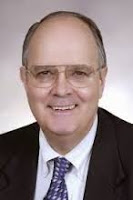 By Mary Lamphere
By Mary LamphereSuicide rates are on the rise and despite CDC reporting ignoring the fact that those who have their prescription pain medications ripped away from them are 30% more likely to commit suicide in the following 6 months, many are demanding change. Physicians for Responsible Opiate Prescribing (PROP) in conjunction with the CDC, are responsible for the fear tactics that have resulted in many physicians refusing to prescribe pain medication to long-term, chronic opioid therapy patients, despite the risks of abrupt discontinuation or the threat of suicide that has entailed. Sadly, recent reports show that this has led to a significant, and continued, rise in the number of chronic pain patients that are resorting to suicide as a means of getting “relief.”
Initiatives to STOP Prescribing
Several states and federal agencies have vowed to stop prescribing opiates even to those who legitimately need the medications in order to have any quality of life. The VA, state level authorities and several hospitals including the Colorado Hospital Association are working toward goals of zero opioid prescribing. Many have already enacted no-opioid policies and others are seeking similar relief programs to eradicate the use of opiates such as Hydrocodone, Oxycodone or Dilaudid in their treatment.
But what is this doing to those who have been prescribed the medications for months, or years prior?
Many resort to suicide—the only known method of treatment for their debilitating pain.
CDC Ignores Suicides
In 2016, the suicide rate was over 45K people in the U.S. this rivals rates of opiate overdose which were approximately 42,000. Nationwide, suicides have risen about 30% since the late 1990s and continue to rise in direct correlation with the number of opiate prescriptions that are reduced. However, despite the very specific correlation between the number of people dying by suicide compared to the reduction in the number of opiate prescriptions, the CDC fails to recognize the dangers and has yet to issue a true statement to doctors about this.
CDC can give vast information about WHO commits suicide and WHY. They mention that mental health is not always a factor and that things like substance abuse, physical health problems and financial problems are often the root cause of suicide. However, they fail to mention or to go into detail as to whether those who commit suicide are or were recently pain management patients.
When asked directly if lack of access to opioid medications could be contributing to the suicide rates of pain patients, the CDC mentions that they are not investigating the direct correlation between suicide deaths and lack of medication or treatment for pain. They go on to mention that the management of pain is an important issue that is being examined by the CDC, but that the CDC is only tracking prescriptions, NOT the quality of pain care.
Quality Meets Quantity
While we are opposed to getting more people addicted to prescription opiates such as Oxycodone or Hydrocodone, and we recognize the need for quality addiction treatment programs, we encourage the CDC to take further action and to look into the quality vs quantity question in relation to pain management. Are patients experiencing less quality of life due to a lower quantity of pain medications being made available to them on a daily basis?
In a recent survey of pain patients, over 40% mention that in the year since the CDC had made their guidelines public and since doctors had been cutting back on prescriptions, they had contemplated suicide because they considered their pain management to be so poorly treated. Further studies show that hundreds or thousands of patients that recently had their medications stripped away have committed suicide in the six months following erratic changes in their treatment.
Mary is a dedicated journalist at www.addictions.com and www.detox.com with a background in addiction treatment and recovery. She mostly writes about the ways that drug addiction can interfere with interpersonal relationships but enjoys all things recovery related. When she's not thinking about her writing, she enjoys spending time with family and friends.
More information on this topic:
Wesley Smith: Sacrificing pain patients to prevent opioid abuse.
Alex Schadenberg: Will Oregon's plan to eliminate opioid prescriptions for chronic pain medicaid patients increase requests for assisted suicide?
Nancy Valko: The Opioid crisis and suicide.
Amy Hasbrouck and Taylor Hyatt: Disability and the Opioid crisis.
Not Dead Yet: The Opioid crisis and the news that isn't talked about.






















